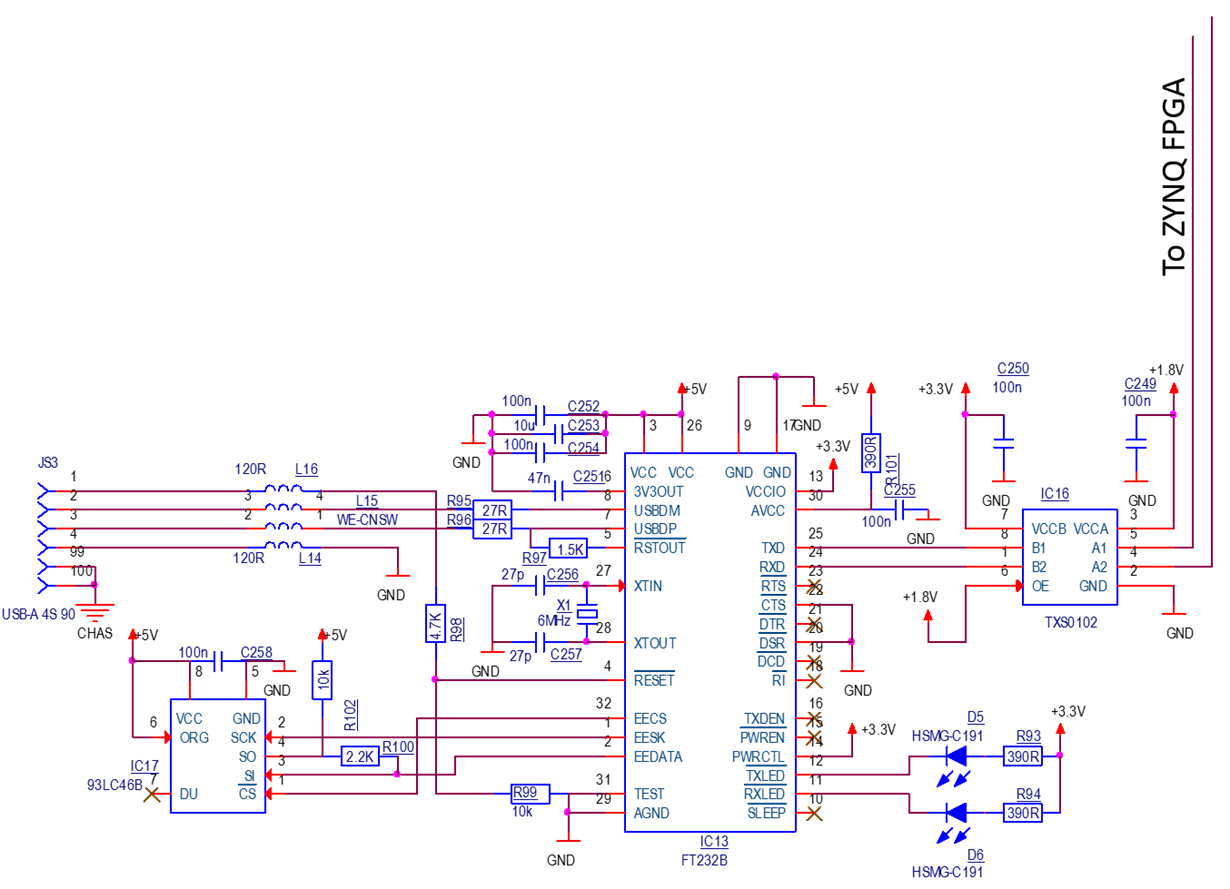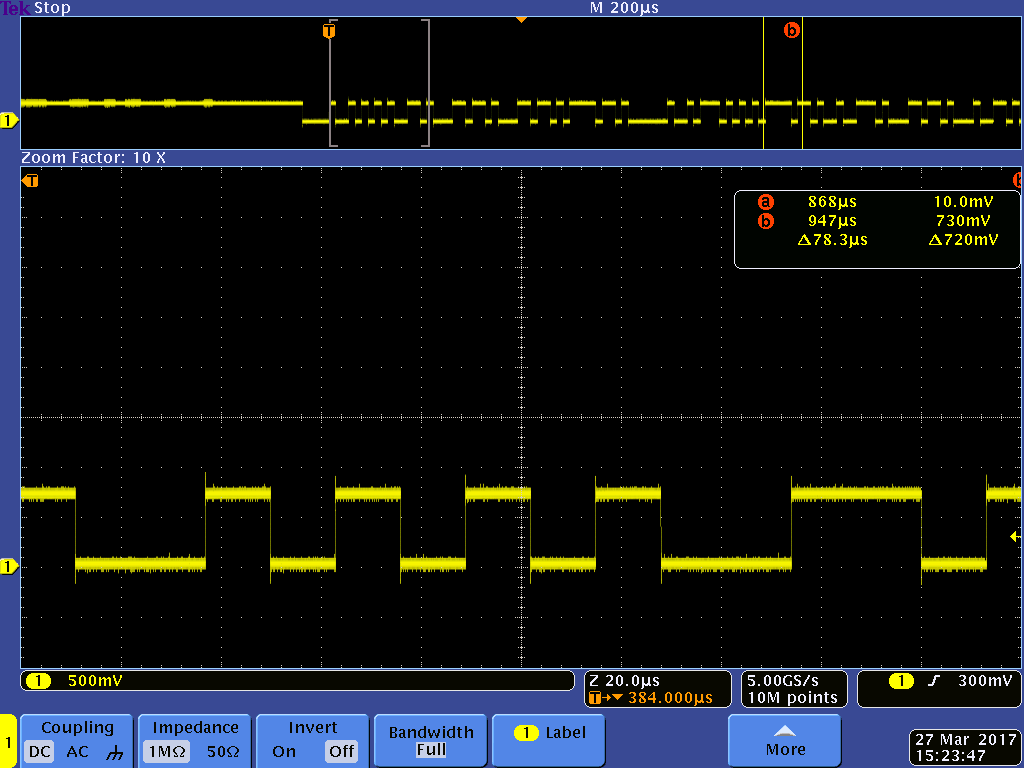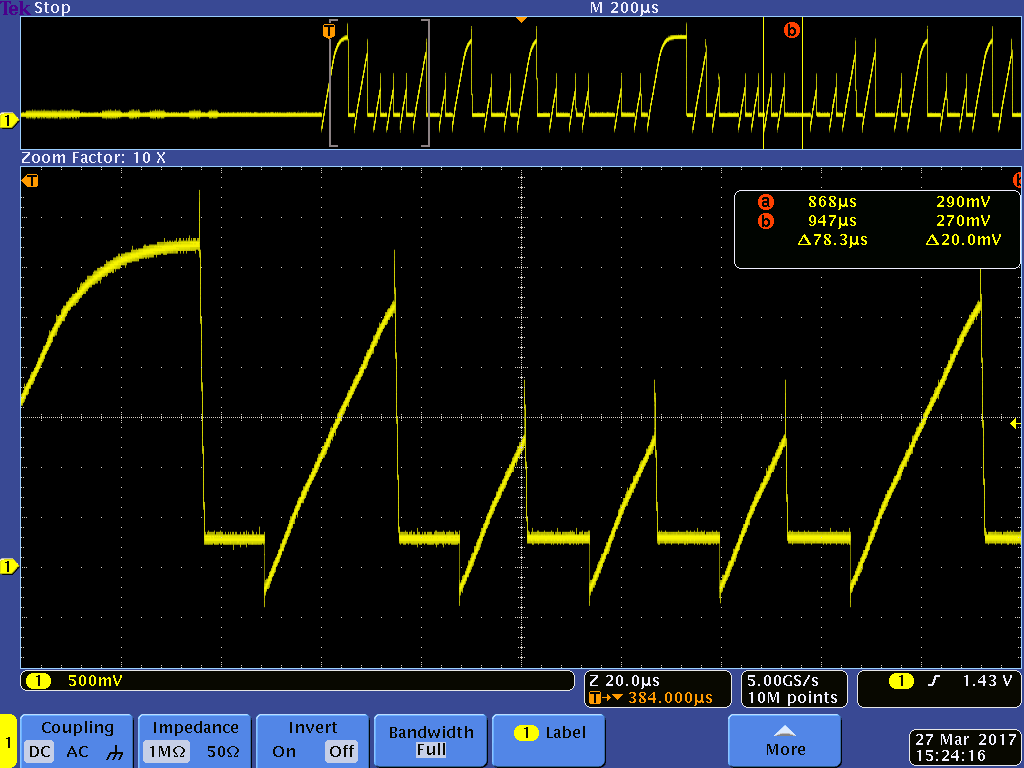Other Parts Discussed in Thread: TXB0102
Hi
I hope that some of you can help me.
I have used the TXS0102 to level shift the TXD and RXD between a 1.8V FPGA and 3.3V UART/USB (FT232B).
The problem is that it does not work!
Sending data from the FPGA to the USB, just gives rubbish data on the USB.
The signal (RXD) from the FPGA to the TXS0102 looks ok
But the signal from TXS0102 to FT232B looks strange:
I will try to put a 1Kohm pull-up to the FT232-TXS0102 signal and hopefully that will produce the correct output.
I have two questions:
- It looks like the TXS0102 is inverting the signal. Is it supposed to do so?, or if not: What could be wrong?
- It is difficult to see if the IC is mounted correctly. Maybe the PCB supplier has turned it 180 degrees. When looking at the picture, pin 1 is supposed to be in the upper left corner. Can you confirm that it is positioned correct?
Best regards
Søren




